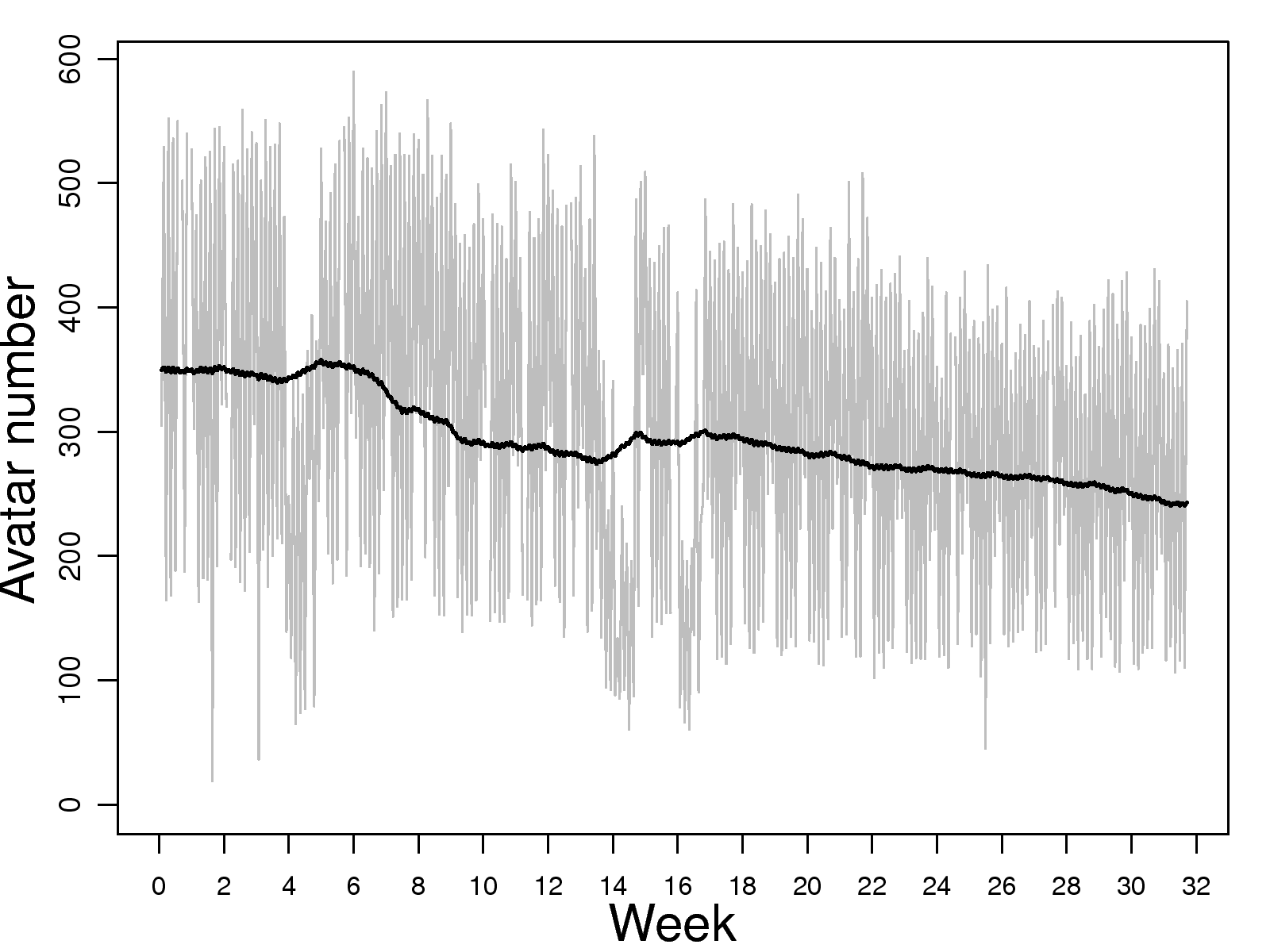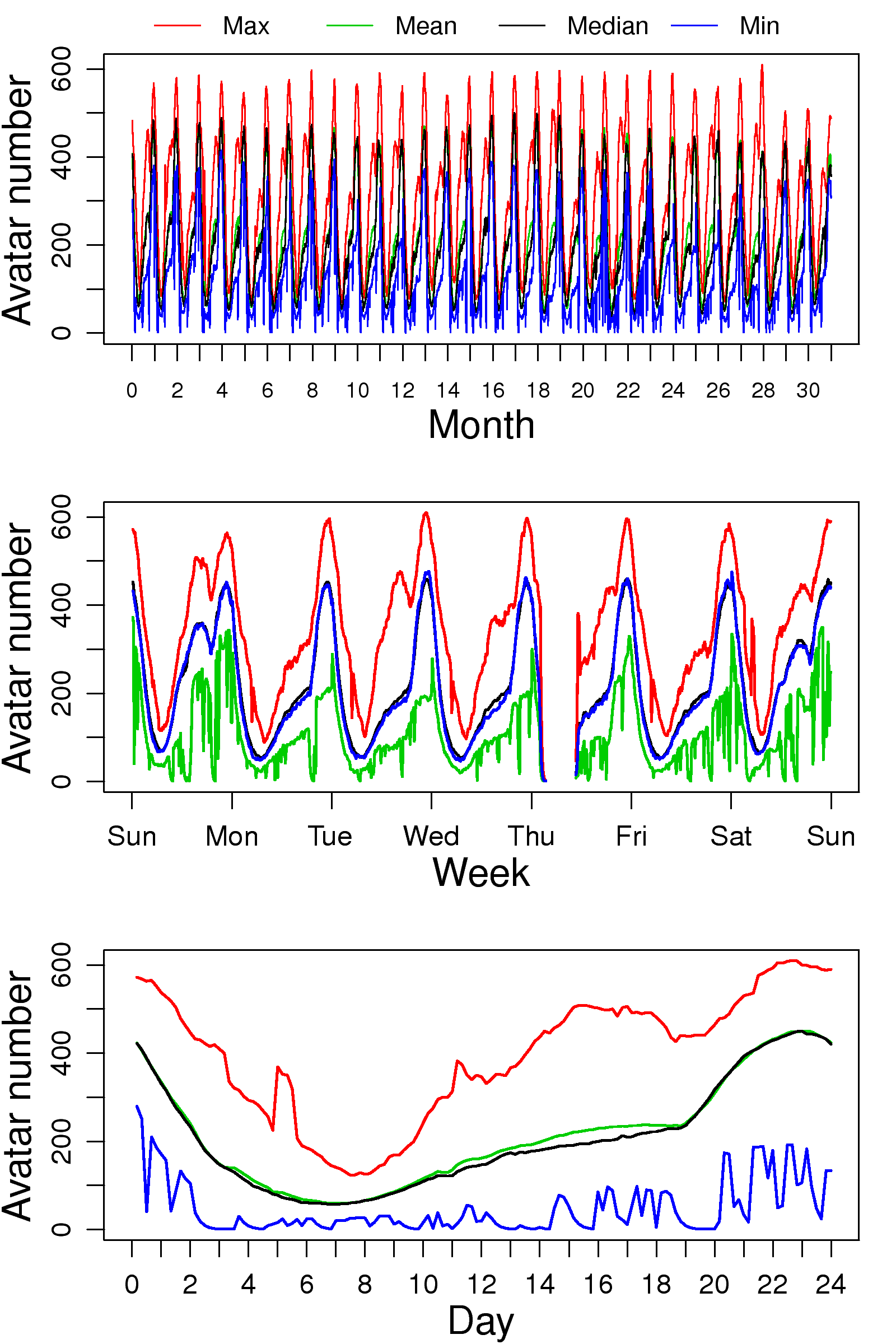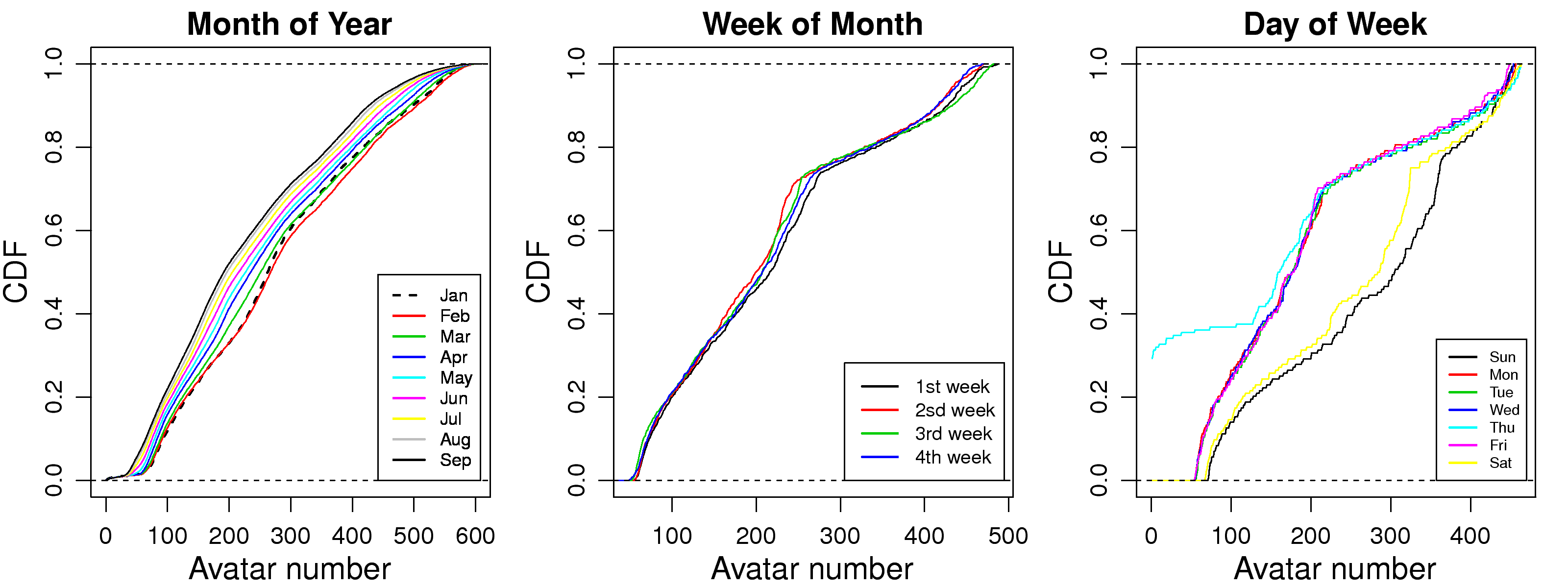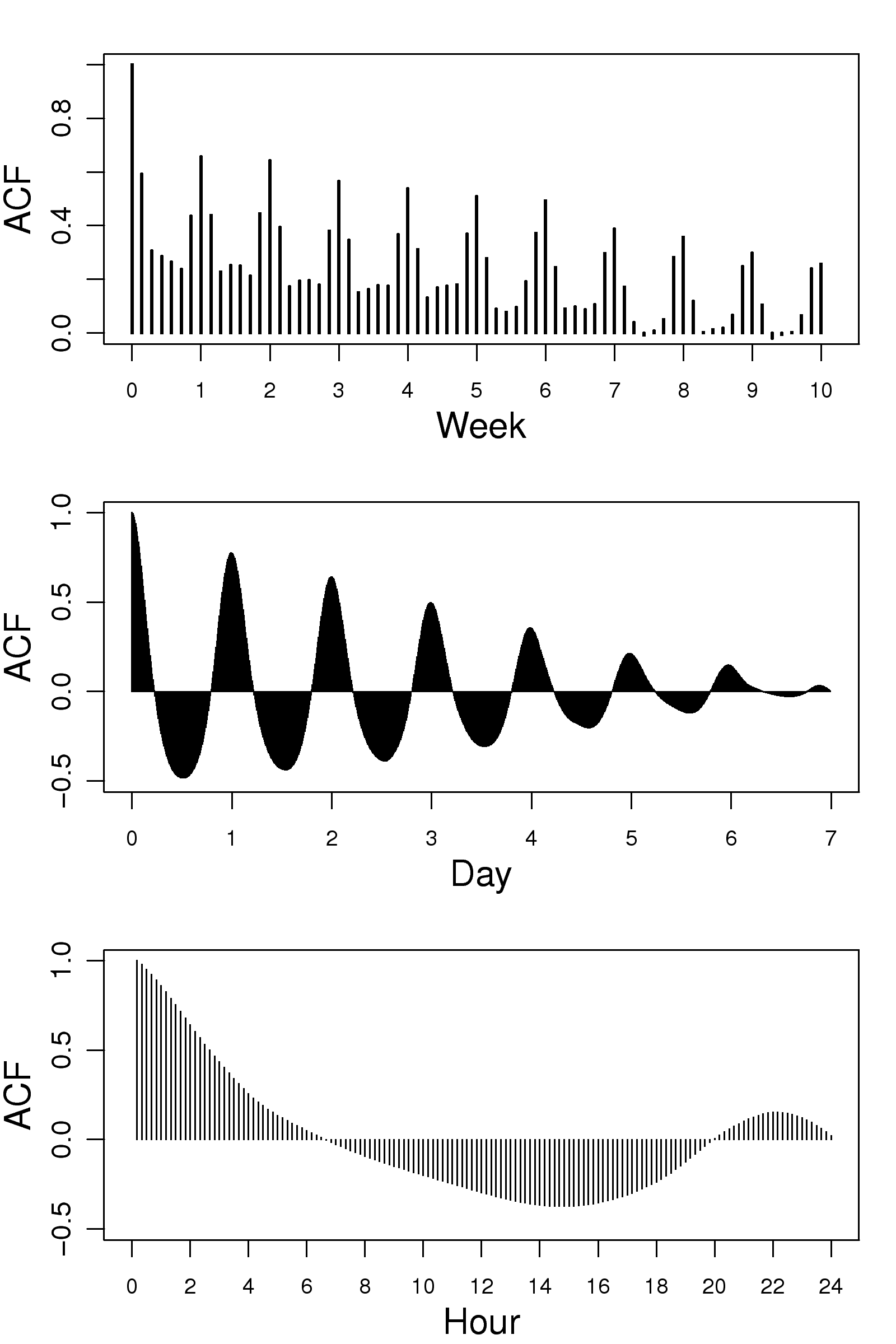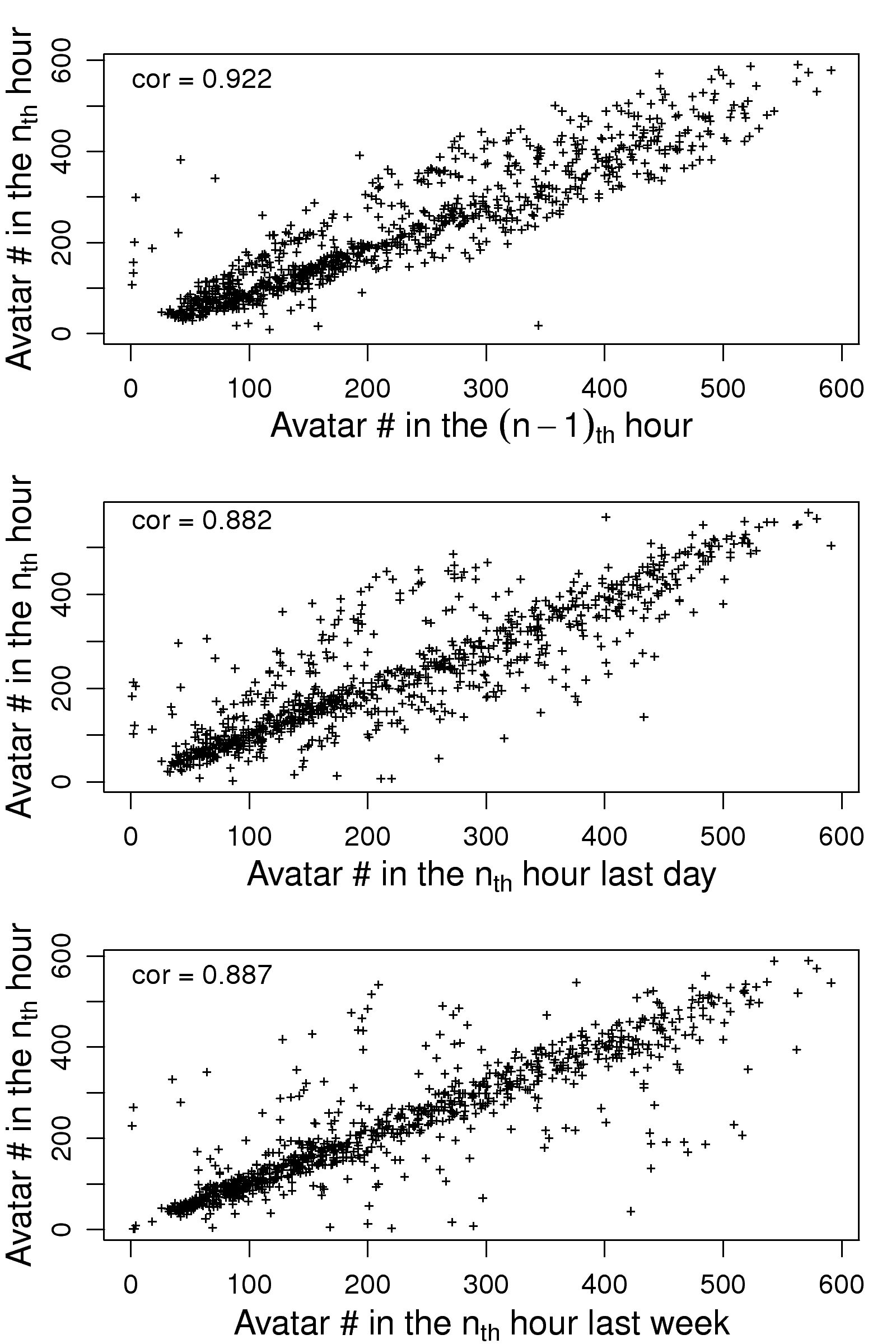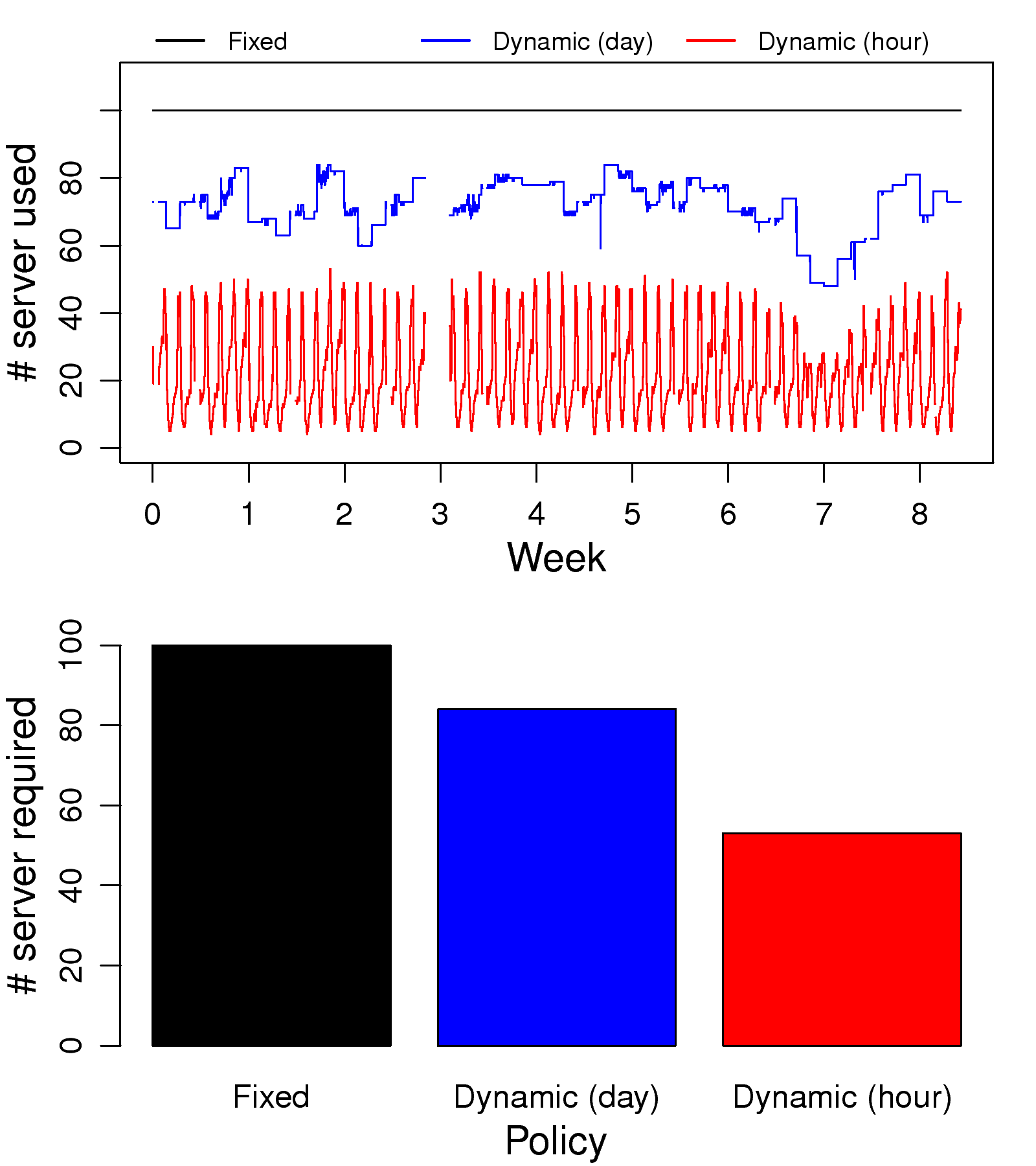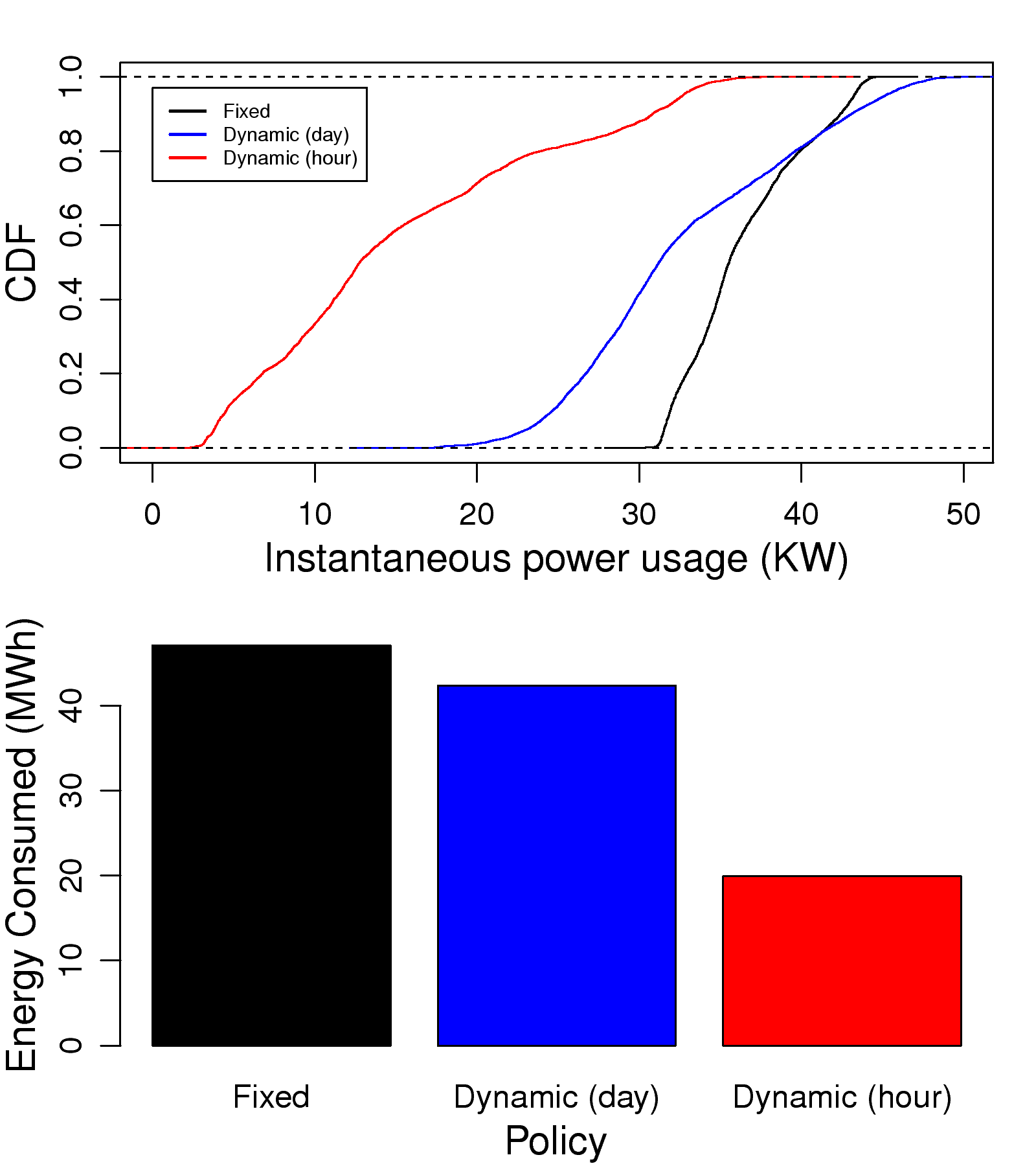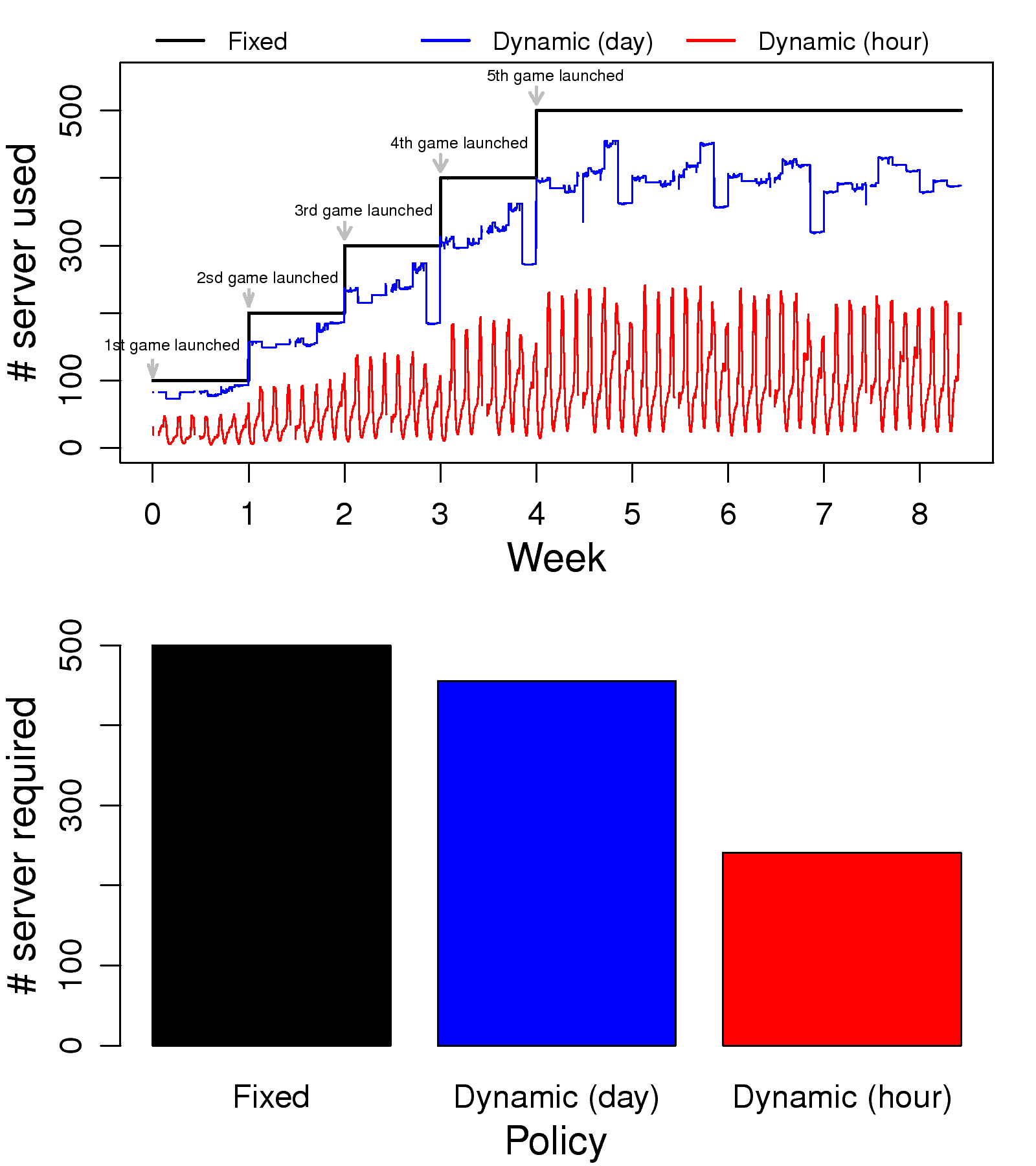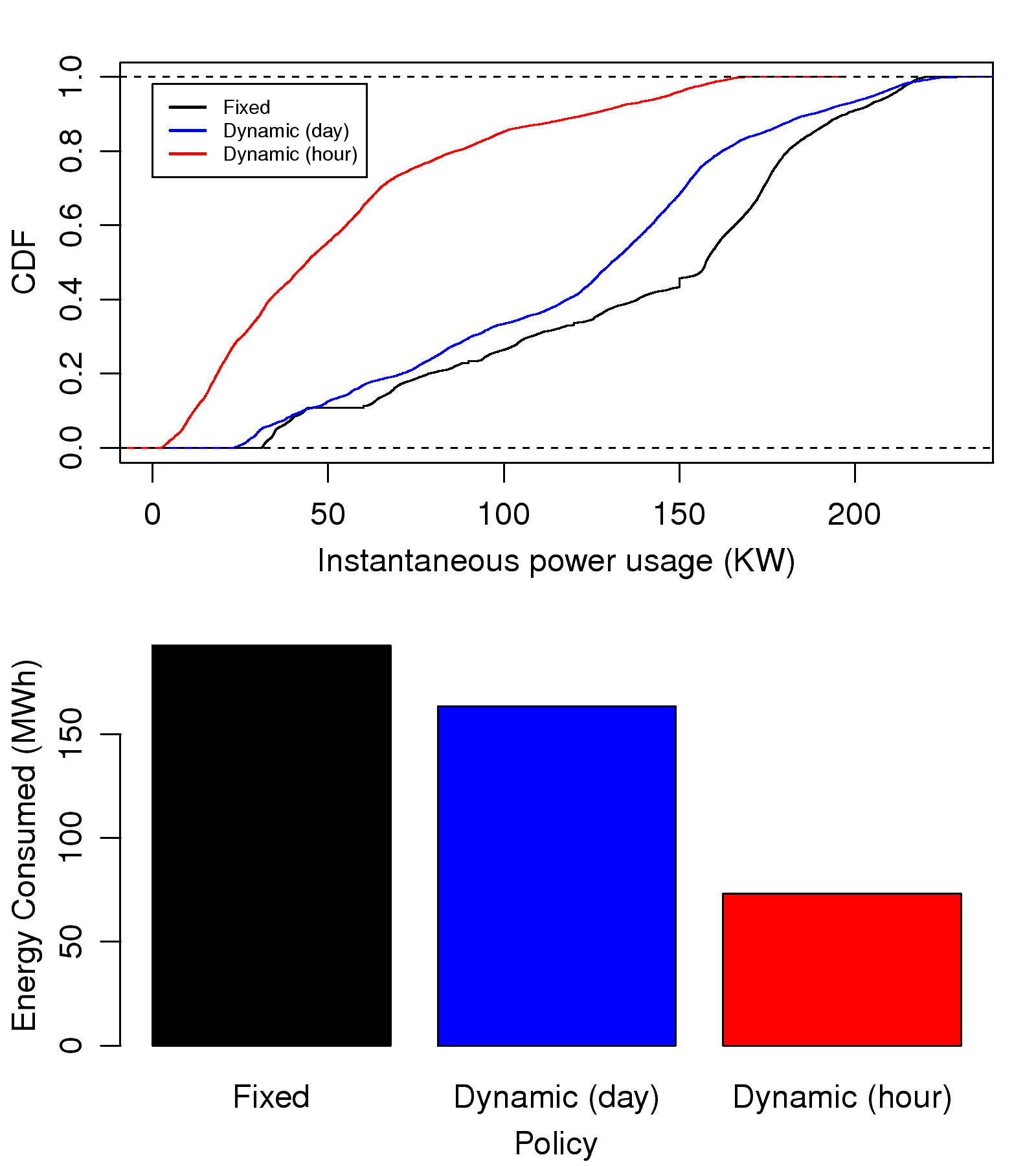Table 3: Summary of benefits introduced by zone-based server consolidation
strategy.
[1]
Blizzard Entertainment Inc., "World of Warcraft subscriber base reaches
11.5 million worldwide,"
http://us.blizzard.com/en-us/company/press/pressreleases.html?081121, Nov
2008.
[2]
C. Chambers, W.-c. Feng, S. Sahu, and D. Saha, "Measurement-based
characterization of a collection of on-line games," in
IMC'05, 2005,
pp. 1-14.
[3]
V. H.-h. Chen and H. B.-L. Duh, "Understanding social interaction in World of
Warcraft," in
ACE'07, 2007, pp. 21-24.
[4]
U. Environmental Protection Agency, "Server and data center energy
efficiency,"
Final Report to Congress, 2007.
[5]
X. Fan, W.-D. Weber, and L. A. Barroso, "Power provisioning for a
warehouse-sized computer," in
ISCA'07, 2007, pp. 13-23.
[6]
T. Henderson and S. Bhatti, "Modelling user behaviour in networked games," in
SIGMM'01, 2001, pp. 212-220.
[7]
J. Heo, X. Zhu, P. Padala, and Z. Wang, "Memory overbooking and dynamic
control of Xen virtual machines in consolidated environments," in
IM'09, 2009, pp. 630-637.
[8]
J. Kim, J. Choi, D. Chang, T. Kwon, Y. Choi, and E. Yuk, "Traffic
characteristics of a massively multi-player online role playing game," in
NetGames'05, 2005, pp. 1-8.
[9]
M. Kwok and G. Yeung, "Characterization of user behavior in a multi-player
online game," in
ACE'05, 2005, pp. 69-74.
[10]
D. A. Menasce, "Virtualization: Concepts, applications, and performance
modeling,"
CMG'05, 2005.
[11]
R. Miller, "WoW's back end: 10 data centers, 75,000 cores,"
http://www.datacenterknowledge.com/archives/2009/11/25/wows-back-end-10-data-centers-75000-cores/, 2009.
[12]
Ministry of Culture of the People's Republic of China, "2009 White paper of
China MMOG market,"
http://big5.gov.cn/gate/big5/www.gov.cn/gzdt/2010-01/19/content_1514798.htm, 2010.
[13]
MMORPG.com, "Total game list,"
http://www.mmorpg.com/gamelist.cfm, 2010.
[14]
V. Nae, A. Iosup, R. Prodan, and T. Fahringer, "The impact of virtualization
on the performance of massively multiplayer online games," in
NetGames'09, 2009, pp. 1-6.
[15]
B. Nardi, "Collaborative play in World of Warcraft," in
LA-WEB'06,
2006, p. 3.
[16]
D. Pittman and C. GauthierDickey, "A measurement study of virtual populations
in massively multiplayer online games," in
NetGames'07, 2007, pp.
25-30.
[17]
A. Qureshi, R. Weber, H. Balakrishnan, J. Guttag, and B. Maggs, "Cutting the
electric bill for Internet-scale systems," in
SIGCOMM'09, 2009, pp.
123-134.
[18]
ScreenDigest, "Subscription MMOGs: life beyond World of Warcraft,"
http://gmedia.glos.ac.uk/igd301/docs/PR-LifeBeyondWorldOfWarcraft-240309.pdf, 2009.
[19]
A. Spellmann, K. Erickson, and J. Reynolds, "Server consolidation using
performance modeling,"
IT Professional, vol. 5, no. 5, pp. 31-36,
2003.
[20]
P. Svoboda, W. Karner, and M. Rupp, "Traffic analysis and modeling for World
of Warcraft," in
ICC'07, 2007, pp. 1612 -1617.
[21]
Vazirani and V. Vijay,
Approximation Algorithms. Berlin: Springer, 2001.
[22]
VMware Inc., "Virtualization overview,"
http://www.vmware.com/pdf/virtualization.pdf.
[23]
Voig.com, "MMOGData: Charts, subscriptions,"
http://mmog-data.voig.com/.
[24]
B. S. Woodcock, "An analysis of MMOG subscription growth version 21.0,"
http://www.mmogchart.com/.
[25]
WorldofWarcraft.com, "What is a realm,"
http://www.worldofwarcraft.com/info/basics/realmtypes.html.
[26]
R. Wright, "Expert: 40 percent of World of Warcraft players addicted,"
http://www.tomshardware.com/forum/96296-13-expert-percent-world-warcraft-players-addicted, 2006.
[27]
Z. Zhou, E. Wan, and X. Xu, "2006 online game report," Pacific Epoch Red
Innovation Report Series, 2006.
